Written by R. Ann Parris on The Prepper Journal.
There are lots of positives to growing food in small containers, especially when we can source them for free or very little money and upcycle into production space.
They’re versatile and mobile. We can cart them to new locations inside a season, maximizing light or giving them some shade. We can cart them to new homes. We can cart them indoors.
Being small, we can also pretty quickly and efficiently cover them using our salvaged and saved shower curtains, window screens, and clear trash bags. Size lends the ability to go vertical with many, increasing our growing space inside a footprint.
Many planters can be done using waste materials we salvage from our own homes and curbside pickups, making them pretty economical. They definitely decrease the work of hacking into soil, and amending really poor, compacted soils.
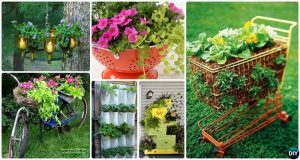
There are some pretty universal drawbacks. We have to produce or source soil or compost for them. That’s a biggie.
Another biggie: There’s commonly limited soil and limited soil depth. That’s going to affect what we can grow due to root space.
Micro- and mini containers won’t develop the positive soil biology of a larger filing cabinet or raised bed. That contributes to requiring more amendments and specific types of amendments.
All containers are a little more prone to weather sensitivity (both drying out and cold) and the micro-mini’s more so than others.
Still, in many cases, they offer us increased versatility and options, and the ease and efficiency can make them very attractive to preppers at all stages and locations, even on acreage with tractor-tilled gardens and field crops.


Laundry Baskets
Lined with plastic, cloth, cardboard, straw flakes, or a bird’s nest of yard waste, laundry baskets can be very handy, versatile, effective containers. The liners won’t last indefinitely (lifespan varies by climate) but large or small, laundry baskets can be a very inexpensive way to grow even larger plants like tomatoes and melons.
*Tidbit Time: The “cheap” soft-flexible plastic baskets will actually hold up to weather wear better than stiff plastic, especially the inexpensive brittle storage totes and most buckets.
Basically, anything you’ve seen done in a 5-gallon bucket or storage tote can be grown in a laundry basket. They’re also applicable to most of the tower-barrel growing systems – to include adding an in-situ composting tube or watering hose/tube in the middle.


The increased footprint over a 5-gallon bucket makes them even better for sweet potatoes. Taller options are pretty much tailor-made for add-soil vertical potato planters. They can be used for vertical grow towers for strawberries, herbs, or salad greens – as-is sometimes, or by snipping only small pieces to expand the planting holes.
*Extra Tidbit: For any outdoor container garden, lay out some plastic or cardboard. (Mulch over it for appearance’s sake) and-or a pretty plastic tablecloth. It’ll decrease the number of weeds that want to pop up around and between containers, and limit the number of weeds that manage to find homes in those containers.
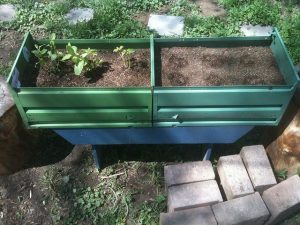

Tabletops & Drawers
We can easily produce chair-accessible “trug” style planters by breathing new life into desks, side tables, and even dining tables. We can also create a trug-style bed by sticking drawers (or anything else sturdy and heavy) on top of folding plastic or metal tables, or picnic tables with the benches removed.
The increased height means less bending and the ability to sit and work for everyone, but it’s a great way to keep seniors and those with injuries in the gardening game.
They’re also a great way to limit child, pet, and some pest damage to our plants.


A laid-flat bookshelf can give us the same benefits as a desk drawer, and create a somewhat larger and more conventional-appearing container garden for balconies, porches or right out in the yard. Buckets or block can be used to give it height if we reinforce the backing, or we can slide it onto a tabletop and fill it as-is.
While bookshelves and desk drawers are most usually restricted in depth, and most tabletop builds are also shallow, they’re plenty deep enough for the salads and strawberries that so many turtles, rabbits, and slugs like to munch.


For added depth with a container, we have the bodies/frames of filing cabinets (and some desks). Even using junk-log and straw-bale “fills” for those, they have plenty of root space for even shrubs and miniature trees.
Filing cabinets, desks, and deeper bookcases or drawers can also be lined or sprayed with FlexSeal to build a self-irrigated garden bed.
As with pretty much any freebie container, some types of drawers will have to be lined to hold soil and water, and increase lifespan, while others will need to have drainage holes drilled out.


Shelves as Shelves
Shelves can increase our growing space as-is, too. The wire-frame types allow a bit more light through, although we’ll still want to be pretty strategic as we lay out our under-the-bed totes, coffee cans, and 2L soda bottle planters.
We can also pretty cheaply and easily construct our own outdoor grow shelves with some cinder blocks and boards from darn-near anything we want to salvage. A couple coats of pant, and both our shelves and planters can even be cute.
Don’t forget: Soil holds water, and water is heavy. Build sturdy.
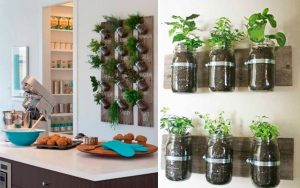

Canning Jars & Soup Cans
On the downer side of containers, let’s talk about the minis and micros. I know we’ve seen the cutesy DIY and retail racks of them, and I’ve suggested them myself. However, they’re even more limited and there are a few things to consider.
Some of the most frequent problems are even more exacerbated with glass jars, even the sizeable quarts and pasta sauce or pickle jars. See, those jars don’t breathe, and they’re rarely set up with even the drainage holes that cans are.
Plant roots must have oxygen to survive. That means we have to be careful with the soil types we use and how much we water them.
Flip side: Super-small containers dry out very easily, especially outdoors or in a sunny window. We may end up watering them a couple times a day to meet their needs without drowning roots.

We also have to look at the size. That goes to both the specific plant in each micro container and how many containers we’ll have.
Aquaponics, hydroponics, and aeroponics get away with super-small root space and soil/media plugs due to their oxygenated conditions and plants’ ability to expand their roots well past their small plug into the air, water, or media around them. Micro and mini planters are much more restricted.
A larger plant like rosemary, basil, and sage just isn’t going to be happy and healthy limited to a soup can or pint jar. Even a quart jar is pushing it, and will seriously stunt our plant.
Sometimes stunting is fine, but how much of our herbs are we looking at taking off at a time if the plant never gets much bigger than six or eight inches? How many tiny containers would it take to harvest reasonable amounts from those larger herbs?
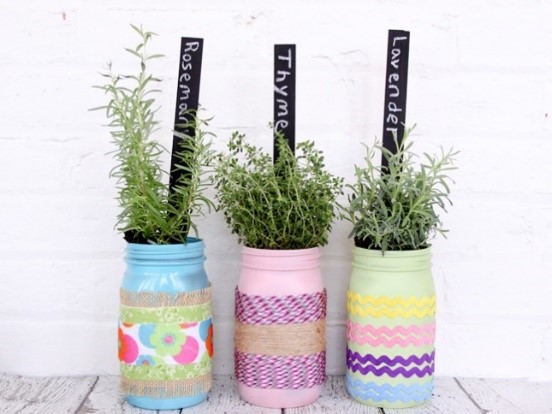

There are herbs that are self-limiting enough to do well in tiny containers, and herbs that yield fast enough and get used in amounts that make it reasonable even if we only have one or two – chives, parsley, and especially the lemon-flavored balm and thyme among them.
There are also microgreens and small cut-and-come again greens that work well in even small soup cans because we can select harvest a leaf or two from a dozen and have ourselves a small salad, taco/wrap filler, or sandwich toppers.
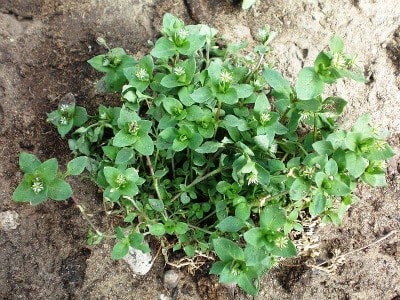

We can also look to our wild edibles in many cases, or the less-common edibles.
If I’m growing peas for their spinach-like sprouts and tips, a small container and low number is fine. Wild violet, henbit, wood sorrel, bittercress, wild mustard, onion grass, and chickweed all handle cut-and-come-again grazing and small containers well – and handle them better than some of our domestic lettuces, mini mustards, and baby spinach.
Those restrictions commonly apply to pockets in hanging shoe organizer gardens, gutter-type gardens, and other cutsey stuff like hanging coffee mugs for planters.

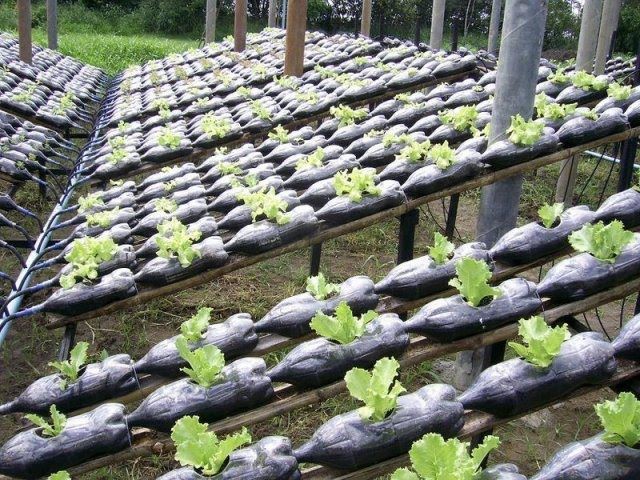
They’re not total bunk. I’ve included them in small-space and winter growing suggestions. But when we’re growing for production — not decoration — the size, per-container and in-total harvest amounts, and some of the plant health issues require consideration.
The extra soil space in vertical pallet gardens, 2L bottles, larger pickle jars, and coffee tubs increases our options for planting, but as with any “small” garden we still want to pay attention to yield factors.


Upcycled Container Gardens
There’s plenty to be said for conventional raised and in-ground beds, but containers have their benefits, too. While there are some downsides, especially the micro-mini containers, they can all give our production big boosts and increase our growing season and versatility.
There are plenty of options out there available for curbside pickup, from filing cabinets and desk drawers to shelves where we can stack cut-down soda bottles. There are also options like laundry baskets that are pennies on the dollar what the same volume bucket/keg or weather-hardy tote would be if we can’t salvage what we want.
With so many options, there’s no reason not to get started right now, taking advantage of end-of-season seed and soil/compost sales to get some autumn salads and roots on our plates. Go get dirty!
Follow The Prepper Journal on Facebook!
The post Prepper Up-cycling – Container Gardens & Micro Planters appeared first on The Prepper Journal.
from The Prepper Journal
Don't forget to visit the store and pick up some gear at The COR Outfitters. How prepared are you for emergencies?
#SurvivalFirestarter #SurvivalBugOutBackpack #PrepperSurvivalPack #SHTFGear #SHTFBag

No comments:
Post a Comment